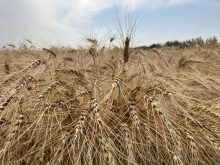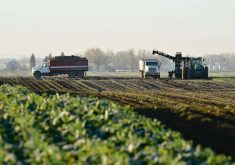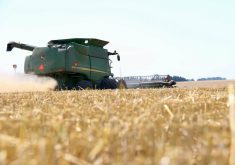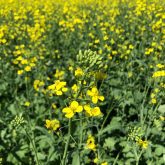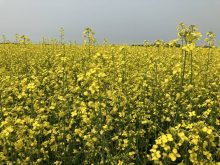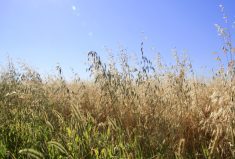Accumulated precipitation in September has been varied across the province, from less than 20 mm in the eastern parts of the North West Region, western parts of the North East Region and central parts of the Peace Region, to upward of 30 mm in most areas in the Southern and Central Regions, and up to 100 mm in the western parts of the North West Region and the northern parts of the Peace Region. However, producers in most areas have not experienced a killing frost to date. Over the last week, cool and damp weather conditions continued in general, but producers benefited from some warm sunny days and combined an additional 10 per cent of their major crops.
Read Also
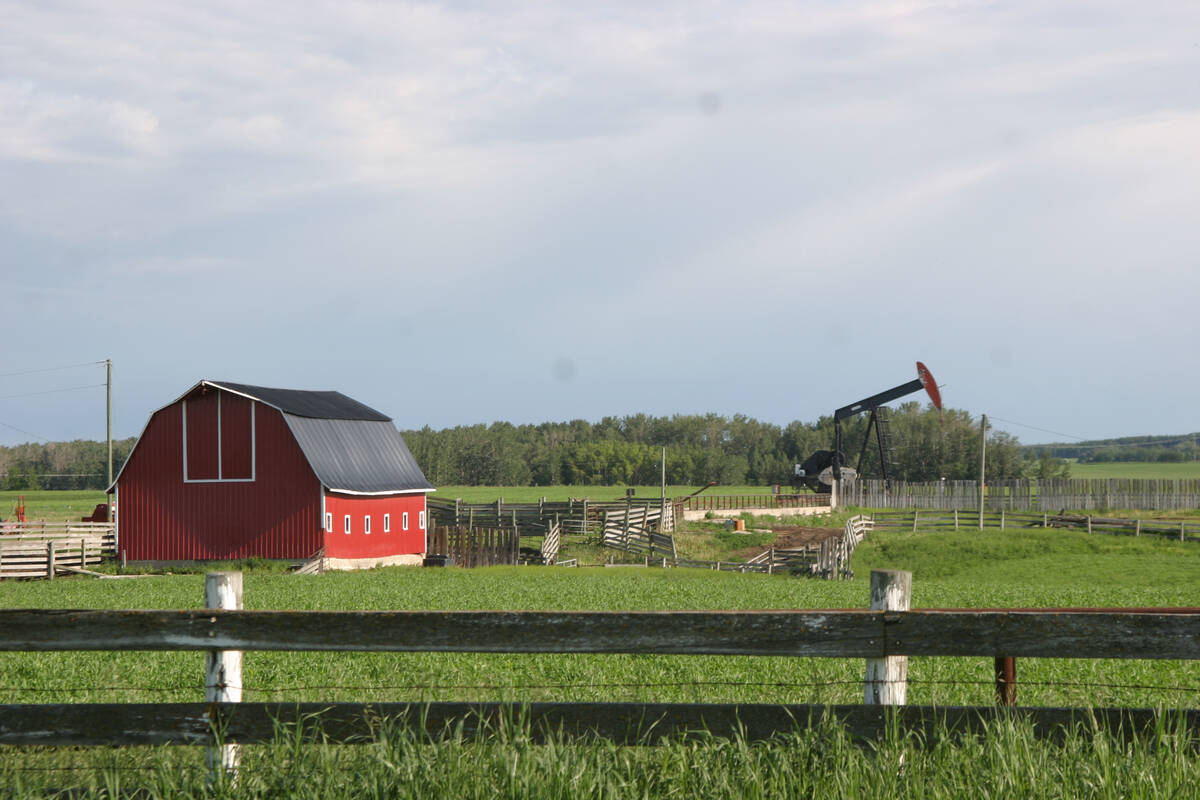
Recommendations in the mature assets strategy could cause potential problems for landholders
The Western Stock Growers’ Association urges producers to pay attention to the potential changes to Alberta’s Mature Assets Strategy.
Currently, about 33 per cent of all crops have been combined, on par with last year, but 12 per cent behind the 5-year (2014-2018) average of 45 per cent. Almost 24 per cent of crops are in swath and 43 per cent are still standing. When compared to the 5-year averages, harvest progress remains behind normal in all regions, with the exception of the Southern Region (See Table 1 below). Harvest progress is 29 per cent behind in the Peace Region, 18 per cent in the North East, 14 per cent in the Central and 13 per cent in the North West Region. Producers have swathed more canola than what they did in recent years due to uneven maturity. Some standing canola will be straight-cut harvested. Most cereals are being combined tough and need to be dried or aerated for safe storage.
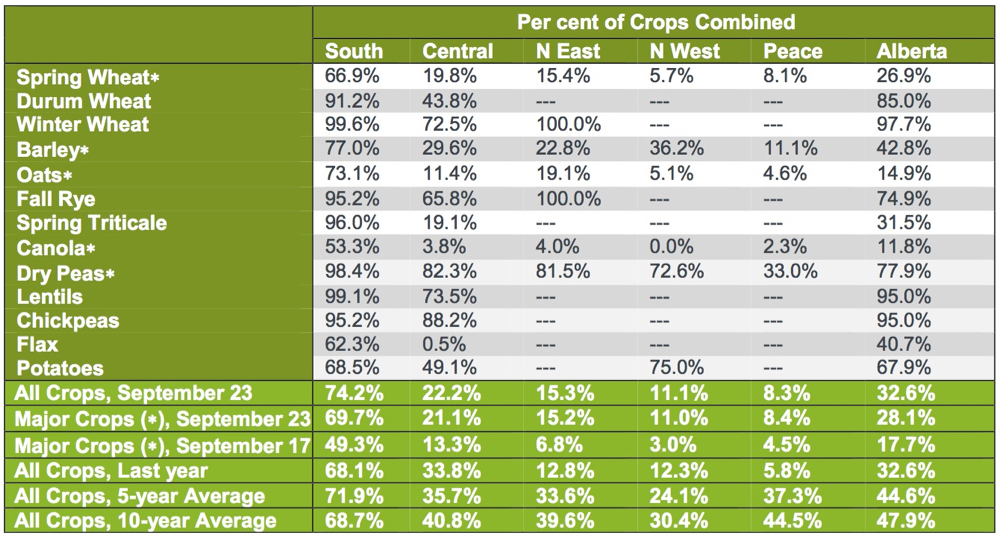
The quality of harvested crops is variable across the province. Provincially to date, about 88 per cent of harvested hard red spring wheat and 85 per cent of durum wheat are grading in the top two grades. About 29 per cent of barley is eligible for malt grade and 49 per cent has graded as No. 1 feed. For oats, about 50 per cent is graded in the top two grades, which is lower than the 5-year average. Almost 97 per cent of harvested canola is in the top two grades, with 88 per cent graded as No. 1, higher than average. For dry peas, nearly 21 per cent is graded as No. 1, 54 per cent as No. 2, 19 per cent as No. 3 and six per cent is in feed grade.
Dryland yield estimates remained similar to the previous estimates reported on September 10, with yields three per cent higher than the short-term averages and five per cent above the long-term averages. Yields for the Central, Peace and North East Regions are 17 per cent, 11 per cent and 10 per cent, respectively above the 5-year averages. For the Southern and North West Regions, yields are 18 per cent and 10 per cent below. The provincial average yields for potatoes on dryland and irrigated fields are estimated at 11.6 and 17.8 tons per acre, respectively. Yields so far for irrigated dry beans are reported at 2,700 pounds per acre and 28.6 tons per acre for sugar beets.
Region One: Southern (Strathmore, Lethbridge, Medicine Hat, Foremost)
- Producers were able to combine an additional 20 per cent of their major crops from a week ago. Yields in the region have been impacted by the dry spring and summer.
- About 74 per cent of all crops are now in the bin (up 31 per cent from two weeks ago), eight per cent in swath and 18 per cent still standing.
- Crop quality remains above the provincial 5-year averages for malt barley and the top two grades of hard red spring wheat, durum wheat, oats and dry peas. About 68 per cent of canola is graded as No. 1, lower than the 5-year average, while 25 per cent is graded as No. 2.
- About 69 per cent of potatoes have now been harvested, with yields on dryland and irrigated fields estimated at 10 and 17.8 tons per acre, respectively. Yields for irrigated dry beans and sugar beets are respectively reported at 2,700 pounds per acre and 28.6 tons per acre.
- Surface soil moisture conditions (sub-surface shown in brackets) are rated as 15 (19) per cent poor, 43 (50) per cent fair, 40 (30) per cent good and 2 (1) per cent excellent.
Region Two: Central (Rimbey, Airdrie, Coronation, Oyen)
- Producers in the region were able to harvest an additional eight per cent of their major crops from a week ago, despite the showers and heavy dews. Warm and dry weather is needed to advance the progress.
- About 22 per cent of all crops are now in the bin (up 13 per cent from two weeks ago), 24 per cent in swath and 54 per cent still standing.
- To date, the quality for all crops is above their provincial averages. However for barley, about 33 per cent is eligible for malt, which is above the 5-year average and 37 per cent graded as No. 1 feed, lower than average.
- About 49 per cent of potatoes have been harvested, with dryland yield at 11.1 tons per acre.
- Surface soil moisture conditions (sub-surface shown in brackets) are rated as 6 (11) per cent poor, 25 (31) per cent fair, 58 (49) per cent good and 11 (9) per cent excellent.
Region Three: North East (Smoky Lake, Vermilion, Camrose, Provost)
- Cool and wet weather is still delaying harvest and crop maturity and dry weather is needed to move harvest operations forward. Producers were able to make a progress of eight per cent of major crops over the last week.
- About 15 per cent of all crops are in the bin (up 12 per cent from two weeks ago), 38 per cent in swath and 47 per cent still standing.
- Crop quality to date is below their provincial averages for malt barley, top two grades of oats and dry peas. About eight per cent of barley is eligible for malt grade and 79 per cent is graded as No. 1 feed, which is above the provincial average. About 22 per cent of oats are graded as either No. 1 or 2 and 78 per cent as No. 3. For dry peas, 49 per cent is graded as No. 2, 35 per cent as No. 3 and 16 per cent as feed.
- Surface soil moisture conditions (sub-surface shown in brackets) are rated as 1 (1) per cent poor, 3 (3) per cent fair, 49 (41) per cent good and 42 (54) per cent excellent, with 5 (1) per cent excessive.
Region Four: North West (Barrhead, Edmonton, Leduc, Drayton Valley, Athabasca)
- Harvest is progressing slowly, due to uncooperative weather conditions. Producers were able to harvest an additional eight per cent of major crops over the last week.
- Almost 11 per cent of all crops are now in the bin (up nine per cent from two weeks ago), 29 per cent in swath and 60 per cent still standing.
- To date, crop quality for the top two grades of the spring wheat is above its provincial average, but only three per cent is graded as No. 1, with 86 per cent as No. 2 and 11 as No. 3. No harvested barley is eligible for malt, with 40 per cent graded as No. 1 feed. For dry peas, 17 per cent is graded as No. 2, 57 per cent as No. 3 and 26 per cent as feed grade.
- Surface soil moisture conditions (sub-surface shown in brackets) are rated as 22 (22) per cent good and 62 (69) per cent excellent, with 16 (9) per cent excessive.
Region Five: Peace River (Fairview, Falher, Grande Prairie, Valleyview)
- Scattered light showers over the last week along with wet cool conditions permitted producers to harvest only an additional four per cent of their crops.
- Currently, about eight per cent of crops are in the bin (up four per cent from two weeks ago), while 30 per cent are in swath and 62 per cent still standing.
- To date, quality for all crops are above their provincial averages, with the exception of dry peas. About 94 per cent of dry peas are graded as No. 2 and six per cent as No. 3.
- Surface soil moisture conditions (sub-surface shown in brackets) are rated as 0 (4) per cent poor, 10 (20) per cent fair, 68 (57) per cent good and 12 (17) per cent excellent, with 10 (2) per cent excessive.



